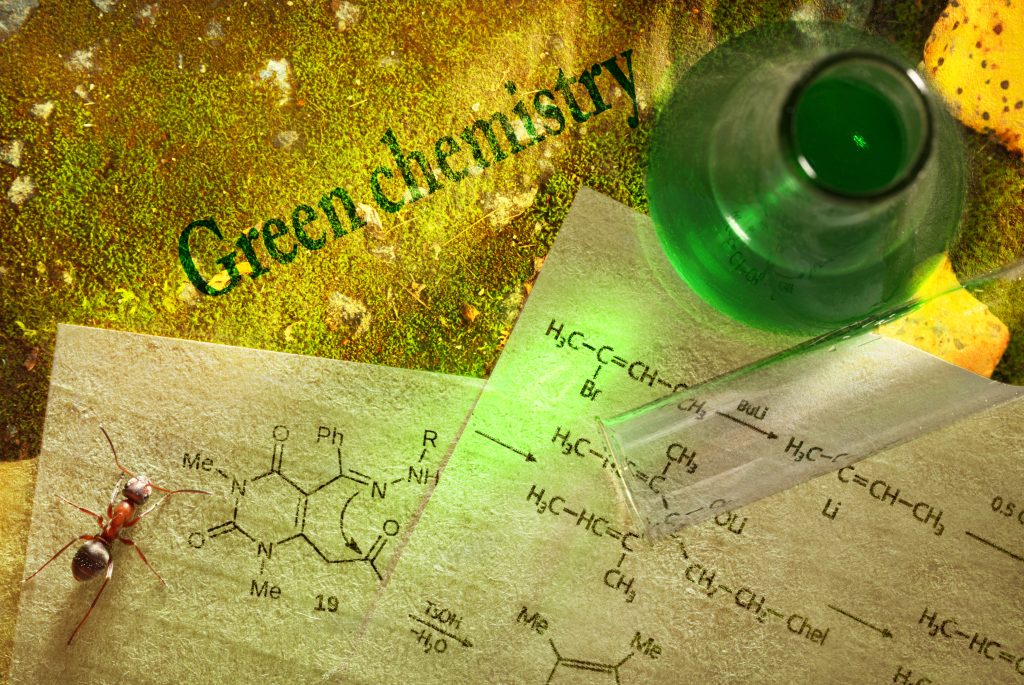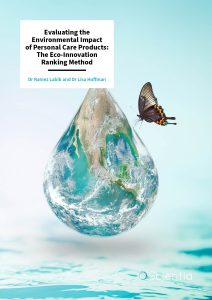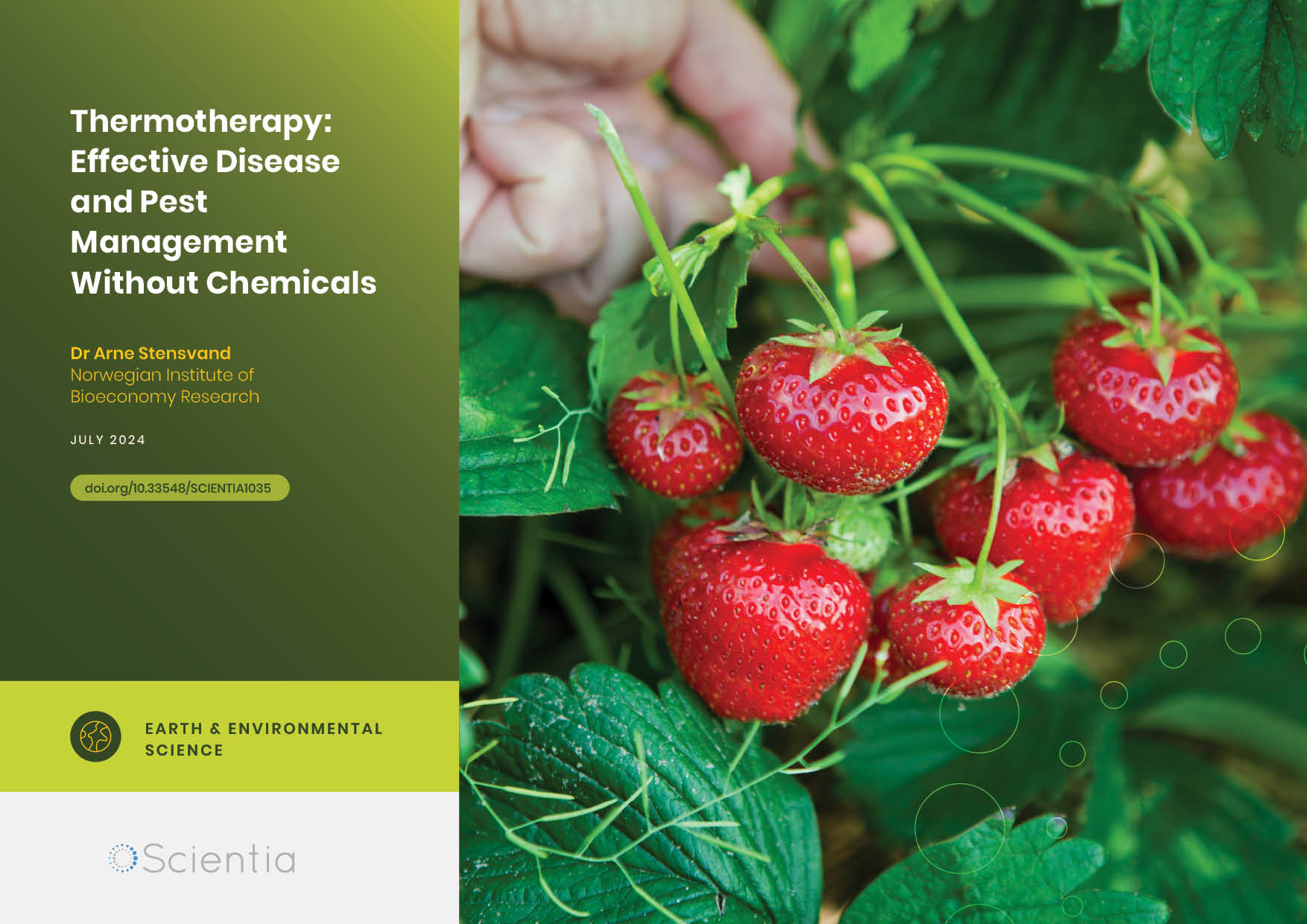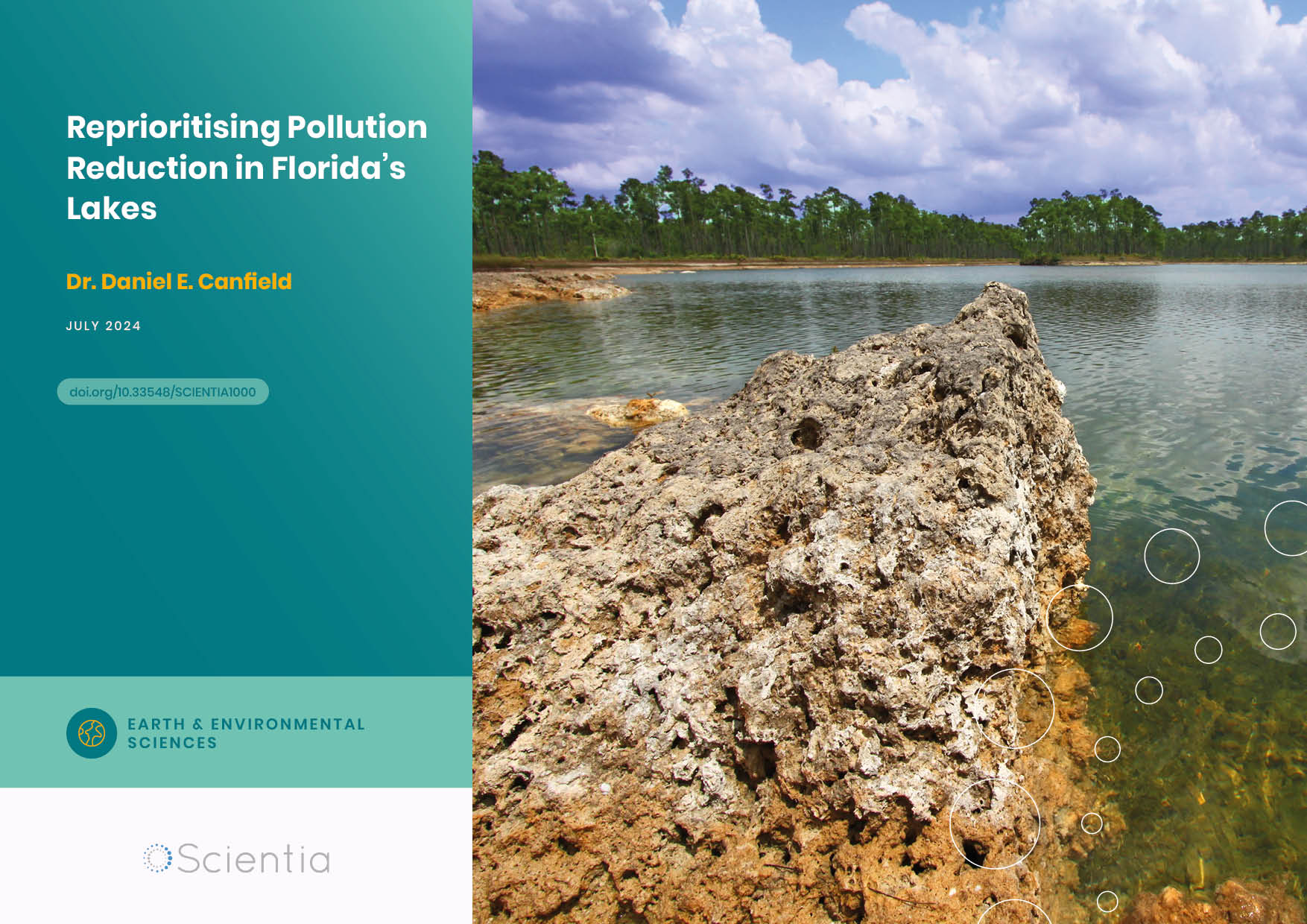Dr Ramez Labib – Dr Lisa Hoffman | Evaluating the Environmental Impact of Personal Care Products: The Eco-Innovation Ranking Method
Like many industries, the manufacture of personal care items such as beauty products is increasingly embracing sustainable practices. Dr Ramez Labib and Dr Lisa Hoffman at Avon Products Inc. in the USA have developed an eco-innovation ranking method to support the early stages of product design. Their semi-automated tool is unique in combining a wide range of measures from ecological risk assessment and life cycle assessment to comprehensively assess the environmental impact of products that end up as wastewater.
Sustainable Practice and Personal Care Products
Sustainable practice is increasingly being implemented across different industries. The vast industry dedicated to manufacturing personal care items (such as hair care products, fragrances, and cosmetics) is no exception. There is particular interest in the development of new processes and products with reduced environmental impact, and this is known as eco-innovation.
Many formulated personal care products end up ‘down-the-drain’ as wastewater due to being rinsed off, in the case of shampoo, for example. This means that the aquatic environment (rivers, lakes, oceans, and so on) and the water-dependent species, including fish, plants, and microorganisms that reside there, are vulnerable to potentially toxic and hazardous effects of end-of-life products.
Assessing Environmental Impact
To support eco-innovation, product designers need to be able to evaluate the environmental impact of their products. Two widely used techniques are ecological risk assessment and life cycle assessment. Critical to both is green chemistry, the field of chemical engineering focussed on eliminating (or at least reducing) the use and generation of hazardous substances.
Ecological risk assessment is predominantly used for regulatory decision-making and by some governments to restrict the ingredients used in personal care products. When this happens, companies need to quickly reformulate their product or stop selling it altogether.
Life cycle assessment is the internationally standardised approach to assessing environmental impact. This comprehensive evaluation is time-consuming and resource-intensive to complete but provides more detailed and broader insights into the potential ecological impacts of a product. As such, there is increasing pressure on companies to adopt this approach in their assessments of personal care products. In an effort to develop ‘greener’ product ranges, some companies have been proactive in ascertaining the end-of-life impacts of all the ingredients in their products and not just fragrance compounds and active ingredients as typically undertaken.
The Need for a New Environmental Assessment Tool
Dr Ramez Labib and Dr Lisa Hoffman at Avon Products Inc. in the USA saw the need to be able to obtain comprehensive data via both ecological risk and life cycle assessment during product design to help companies minimise the potentially adverse environmental impacts.
However, a major challenge to this is that personal care products are made from thousands of different ingredients and life cycle data are missing for many of these. Furthermore, at the early stages of the design process, assessments have to rely on what is known about the key chemical properties of the ingredients and foreseeable product use.
Dr Labib and Dr Hoffman worked with Dr Jennifer Saxe (EcoSafety & Sustainability Inc., USA) to develop a new environmental assessment tool incorporating components from both ecological risk assessment and life cycle assessment to support the early design of down-the-drain products. A key aim was to help minimise the risk of new products being reformulated due to regulatory changes in the future.

Selection of Measures: Potential Impact Indicators
The scientists started by reviewing the scientific literature and regulatory models in the public domain to ascertain the potential impact indicators currently available. They ensured their selection of measurements included all ecological risk and life cycle assessment scales that could feasibly be incorporated into the new tool.
The next step was to identify distinct substance classes requiring dedicated and specific environmental assessment. This was achieved by taking representative personal care products, such as shampoos and make-up, and examining the ingredients. The most common ingredient type was classed as ‘non-polymer organic substances’ used either individually or with other similar compounds, and was chosen by the scientists for the initial development of their tool.
The potential impact indicators selected by the researchers include the ecological toxicity during end-of-life exposures, the potential for ground-level photochemical ozone (smog) formation, direct greenhouse gas emissions from the use of the personal care product, and depletion of scarce mineral resources. The concept of ‘persistence’ was included as an independent potential impact indicator, although not technically an environmental impact, in line with the approach taken by Regulators as a proxy measure for exposure and multiple impacts. The aim of this approach is to try to account for complex and unexpected ecosystem impacts that cannot be ascertained on the basis of the extant literature.
The Eco-Innovation Ranking Method
The semi-automated spreadsheet gathers and processes environmental impact data for ingredients and combines the data to produce a single rank value ranging from 1 (best) to 10 (worst) for each ingredient. The tool allows end users to change potential impact indicators as science progresses and priorities change. The scientists illustrated the use of the model with ten shampoos and nine make-up products to confirm its ability to differentiate among formulas.
Application and Implications
Although the scientists have focussed on personal care products, the eco-innovation ranking method can be applied to all down-the-drain products. Importantly, the weighting factors can be readily altered to fit sustainability goals as they emerge and evolve.
The eco-innovation ranking method is unique in combining to promote sustainability at the early product design stage approaches to support early stages of product design. This work will help companies to measure and achieve sustainability objectives, and contribute towards meeting the United Nations Sustainable Development Goals to more effectively manage chemicals throughout their lifecycle and minimise their adverse environmental impacts.
SHARE
DOWNLOAD E-BOOK
REFERENCE
https://doi.org/10.33548/SCIENTIA973
MEET THE RESEARCHERS

Ramez Labib, PhD, MBA, DABT, ERT
Senior Director, Toxicology
Avon Products Inc.
Suffern, NY
USA
Dr Ramez Labib obtained his PhD (Biomedical Sciences in Pharmacology and Toxicology) in 2002 at the University of Medicine and Dentistry of New Jersey, and an MBA at the New Jersey Institute of Technology in 2012. In 2009, he became a Diplomat of the American Board of Toxicology (recertified in 2019) and in 2014 was recognised as a European Registered Toxicologist. He is a full member of the Society of Toxicology, the Society of Environmental Toxicology and Chemistry, and the Mid-Atlantic Chapter of the Society of Toxicology. In his role as Senior Director, Toxicology at Avon, Dr Labib oversees a large team of safety professionals and liaises with R&D professionals to drive innovation.

Lisa Hoffman, PhD
Lead of Toxicology and Clinical Safety (Senior Manager)
Avon Products Inc.
Suffern, NY
USA
Dr Lisa Hoffman obtained her PhD in Pharmaceutical Sciences at St. John’s University (New York) in 2015. She has been a European Registered Toxicologist since 2022, is a member of the Society of Toxicology (SOT), the Mid-Atlantic Regional Chapter of SOT (MASOT), and since 2010, a member of the MASOT Education and Outreach Committee. Dr Hoffman re-joined Avon in 2019 as the Manager of Toxicology and Clinical Safety and is currently the Lead of Toxicology and Clinical Safety (Senior Manager) where she leads a team of toxicologists to ensure the safety of consumer products in all areas of cosmetics, fragrances, and toiletries
KEY COLLABORATORS
Dr Jennifer K. Saxe, EcoSafety & Sustainability Inc.
FUNDING
Avon Products International funded this work.
FURTHER READING
JK Saxe, L Hoffman, R Labib, Method to incorporate green chemistry principles in early-stage product design for sustainability: case studies with personal care products, Green Chemistry, 2022, 24, 4969–4980. DOI: https://doi.org/10.1039/D2GC00842D
![]()
REPUBLISH OUR ARTICLES
We encourage all formats of sharing and republishing of our articles. Whether you want to host on your website, publication or blog, we welcome this. Find out more
Creative Commons Licence (CC BY 4.0)
This work is licensed under a Creative Commons Attribution 4.0 International License. 
What does this mean?
Share: You can copy and redistribute the material in any medium or format
Adapt: You can change, and build upon the material for any purpose, even commercially.
Credit: You must give appropriate credit, provide a link to the license, and indicate if changes were made.
SUBSCRIBE NOW
Follow Us
MORE ARTICLES YOU MAY LIKE
Dr Arne Stensvand | Thermotherapy: Effective Disease and Pest Management Without Chemicals
Dr Arne Stensvand and his team at the Norwegian Institute of Bioeconomy Research are developing physical methods of pest reduction in plants. The team is specifically interested in strawberry plants, for which pest management is vital for crop success. They are pioneering thermotherapy as a heat treatment method to provide an environmentally effective and economically sound non-chemical approach to pest management.
Dr. Daniel Canfield | Reprioritising Pollution Reduction in Florida’s Lakes
Florida’s landscape is dotted with thousands of lakes that reflect regional geology, topography and anthropogenic activities. Phosphorus and nitrogen are critical nutrients for maintaining the wide range of biological production expressed across Florida, but excessive inputs of these nutrients due to past human activities impair many waters. There has been a long history of work aiming to address associated water quality pressures, and Dr. Daniel Canfield at the University of Florida has been at the centre of these efforts for over 40 years. Now, with the correction of point-source nutrient inputs, Dr. Canfield proposes that holistic lake management, including the integration of in-lake management strategies with a focus on organic sediment removal, should be much more prominent on the US government’s agenda to provide faster restoration of stakeholders’ lake usability.
Dr Jon Tore Lieng | Dynamically Installed Anchors for Floating Offshore Turbines
Effectively harnessing offshore wind presents a valuable opportunity to increase energy supplies. Floating wind turbines present several advantages over traditional fixed turbines in more shallow waters. Dr Jon Tore Lieng from Deep Sea Anchors and colleagues have developed a type of dynamically installed anchor to hold the structures in place while reducing both the costs and complexity associated with installation where cohesive seabed sediments are realised.
Dr Lifei Wang | Can Species Distribution Models Inform Us About Future Ecosystems?
The world is buzzing with news about how human activities and climate shifts are reshaping our ecosystems. Have you ever wondered how life will adapt to this rapidly changing world? Ecologists might be able to predict how different species will live in future using computer simulations. Dr Lifei Wang at the University of Toronto Scarborough investigates how different stimulations work under varying conditions to provide new insights into what may lie ahead.





